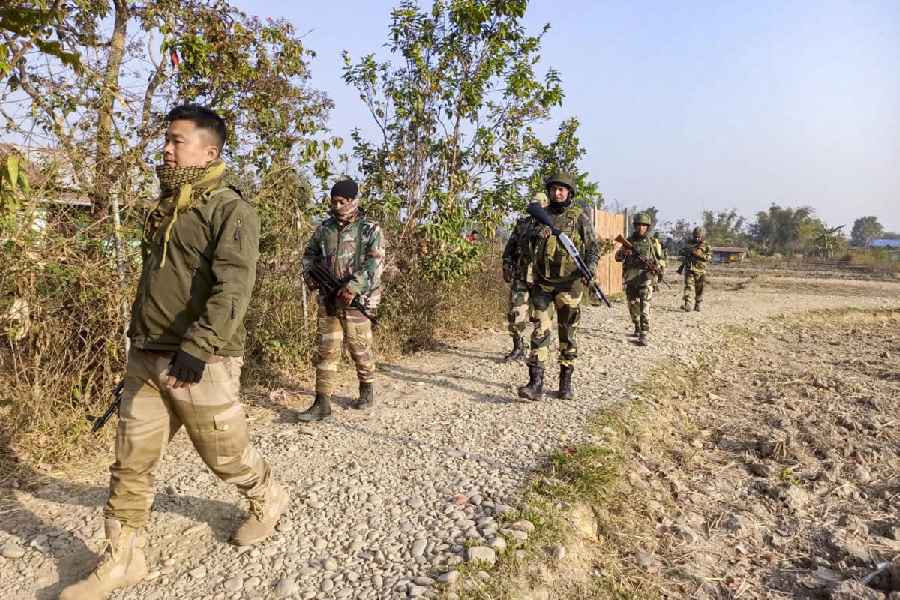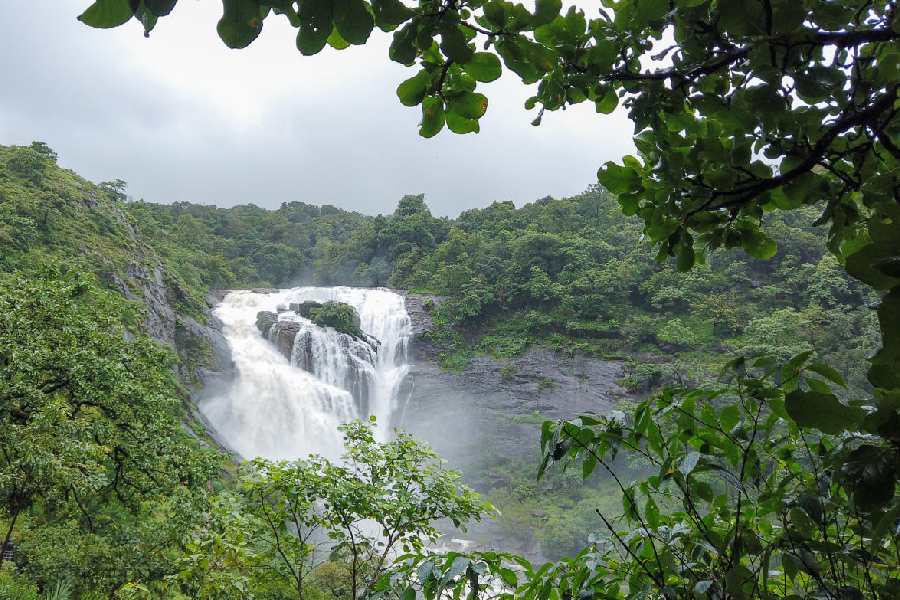 |
 |
 |
| (From top) Kapileswar temple complex, green vegetation covering the water tank inside the premises and broken sculpture gathered at the temple in Bhubaneswar. Pictures by Ashwinee Pati |
Bhubaneswar, Nov. 8: Kapilesvara temple, a prominent religious centre and a significant heritage site, might crumble soon if urgent conservation measures are not taken up.
The age-old monument, situated in the Kapilesvara village on the Puri road, is showing signs of deterioration because of natural and urban pressures.
King Kapilendra Deva of the Suryavamsi dynasty is believed to have built the 14th century structure. The temple has a vast courtyard and a number of sanctums dedicated to different deities with the presiding deity being Lord Shiva.
The exteriors as well as walls, pillars and even some portions of the roof of the chief sanctorum are decorated with exquisite carvings and artistic features. Amongst the most unique features of the temple are the minor statues that seem to portray the king’s supremacy. These statues, carved on the exterior of the temple walls, are intricate depictions of the king and his aides who can be seen obeying different orders of their ruler.
A series of inscriptions are also found at various places in the temple believed to be eulogies in honour of Kapilendra Deva. Apart from these, a wide number of awe-inspiring rock sculptures of deities are also found around the sanctum. However, most of these have fallen prey to erosion and natural forces such as algae deposits.
Numerous striking ancient sculptures found from the temple lie detached within the precinct. These are particularly in a neglected state.
“These statues are beautiful and must be significant for their distinct shapes and forms. The authorities could have either created a closed space to save these from the wrath of rain and sun or could have installed them within the temple. Lying under the sky, most of them have got destroyed,” said Prafulla Mohapatra, a visitor to the temple.
Another concern regarding the preservation of the heritage value of the temple is the plastering in white and red paint done on many parts of the temple such as the sanctum sanctorum and the natamandapa.
“Since the temple is partly being maintained by the villagers, it can be seen that the surroundings within the precinct have been kept clean. But the application of these paints takes the sheen off any heritage monument. Heritage sites should be tried to be conserved in their original look,” said archaeology expert B.K. Rath.
A tank situated in the temple premise adds grandeur to the site. The interior walls of the tank have been decorated with beautiful carvings of deities. However, the tank needs regular cleaning to get rid of the algae deposits. Despite repairs done few years ago by the state archaeology, a number of cracks have developed at many portions on the roof and walls of the temple.
“The present state of the temple is much better than many of its contemporaries. But it needs regular attention of archaeologists so that it does not collapse,” added Rath.










